|
|
01/11/2017 |
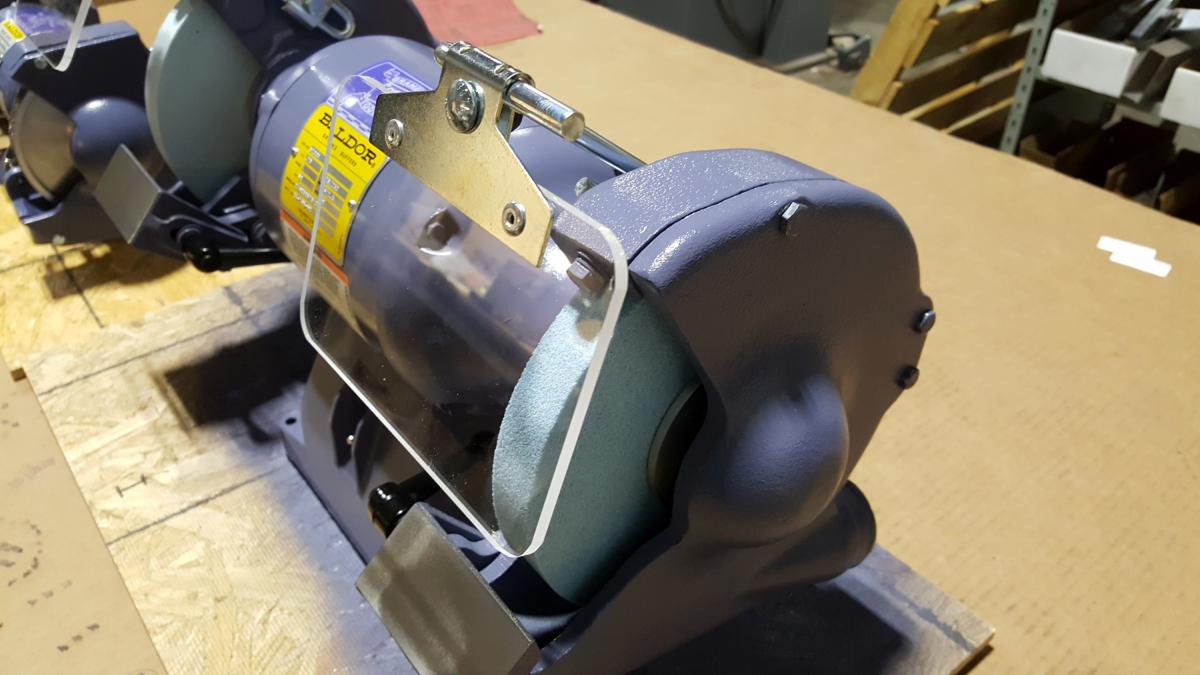
This is part 2 of a series on grinding:
Part 1: Introduction + When To Grind.
Part 2: The Technology of Grinding, Grinders, and Grinding Wheels.
Part 3: Grinding Wheel Chemistry and Nomenclature.
Part 4: Dressing Your Grinding Wheel for Cool Running.
Part 5: Grinding the Hollow.
Part 6: Repairing a Damaged Edge Without Burning the Steel.
These days when shopping for a grinder you have a huge number of choices. From $50 dry grinders from Asia to very expensive slow speed wet grinders with lots of attachments and everything in between. When I was studying woodworking (a long time ago) my teacher, who knew a lot about lots of stuff was scared of grinding. I think this is a common fear. We had a high speed grinder, with who knows what kind of wheel, no wheel dresser, and the fear of burning (overheating) the chisel was real. Burning was way to easy to do and the cure was grinding past the burn - which exposed you to the same issue only with a shorter chisel.
So many people are so scared of burning that they do all their rough work on very coarse diamond stones. This isn't totally off base either. In Japan having a grinding wheel on a jobsite was uncommon and working coarse grits on a stone was very common. In England (and the US I think) up until the invention of the small electric motor in the 1900's most people did not have ready access to a grinder. This especially applied to carpenters and joiners who worked on site. Saturday was the big day for hardware stores when craftsman took their tools to be ground if needed. Hand cranked grinders existed going back centuries but you need an established shop to work in and grinding wheel technology was natural stones which cut slowly - so it made sense to pay someone else to do it.
The revelation for me was when Barry Iles of Ashley Iles visited my shop. He needed to grind something, found my grinder, took all the guards, jigs, and thingies off it. Turned the grinder on, dressed the wheel, then touched the chisel he needed to grind on the wheel and was done 5 seconds later. I said "hey - can you teach me that" And he did, turning my entire fear of grinder away. It's not hard to learn. Actually it's pretty easy to learn.
Grinders
There are many factors involved in selecting a grinder.
Cost - that's pretty obvious. You can buy something that spins a grinding wheel for fifty bucks and it can work. As you work your way up the cost chain you get better materials, better motors, larger wheels, better bearings and more solid rests. Not to mention better customer service.
Wet or Dry
Professional grinders try to grind wet. This solves the cooling problem and you can grind fast. Until recently wet grinders were big complicated machines that were not designed for a home shop. In the past generation Tormak, a Swedish company, introduced a 10" grinder with a water bath for the wheel. Also available from Tormak are some of the best grinding jigs in the industry. It isn't an inexpensive piece of kit but the Tormak is very well made. My issue with the Tormak and all consumer wet grinders is that they are way too slow. The reason professionals grind on big wheels with a water spray is so that they can grind really really fast. The Tormak has a water bath (good) but it also turns really slowly and grinds really slowly (bad). As you get better at grinding the jigs are less and less useful.
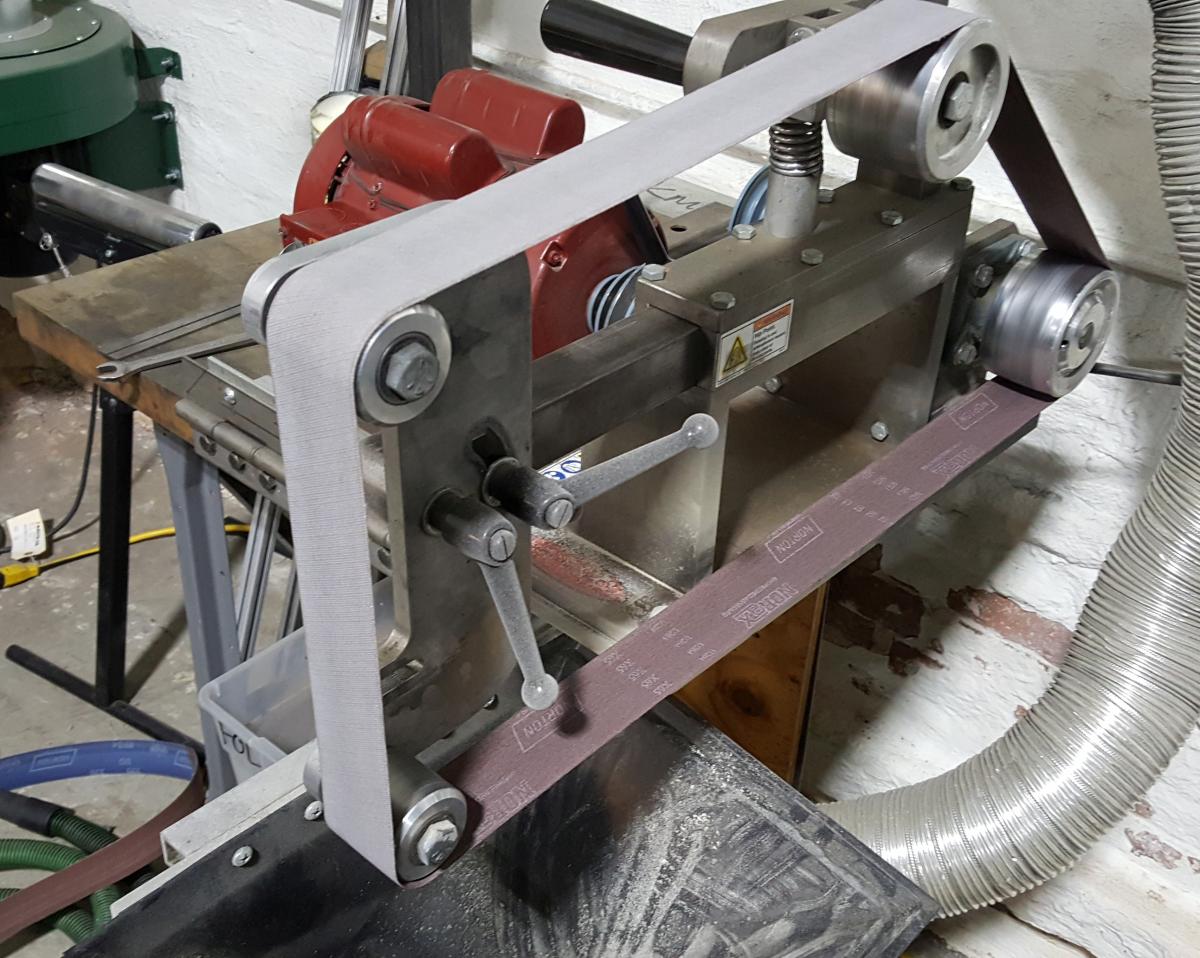 Belt, Flat Grinder, or Wheel Belt, Flat Grinder, or Wheel
Up until recently professional grinders all used large (4') grinding wheels but increasingly belt sanders of various sizes are also popular. A belt will run cooler, and you have a very large selection of grits. We have knife grinding equipment here and can easily hollow grind on a belt. However most less expensive equipment doesn't have that option and since one requirement of mine is being able to grind hollow, a belt sander isn't really a great choice for general woodworking tool sharpening. I have the same issue with flat grinding systems that use abrasive disks. In general they work slowly, I like a hollow grind, and I don't like having to replace disks. One point that should be mentioned. With some of the flat grinding system that use abrasive disks, and belt sanders (but to a lesser extent) you can not only rough grind but also polish. We power sharpen some carving tools on a Koch machine with uses paper wheels. Flat grinders can also polish but in general with a hollow grind I think hand honing is easier, less fussy, and faster.
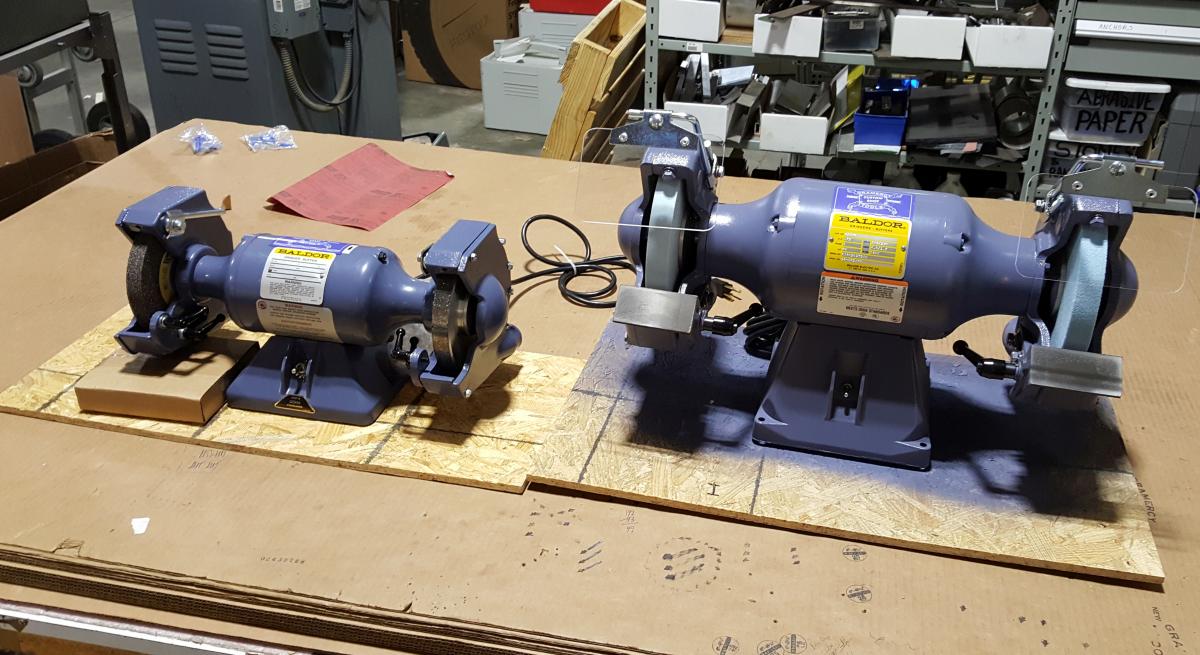 How big a wheel How big a wheel
We stock two sizes of grinder: 6" and 8". 7" grinders had a certain vogue but currently there are fewer options for wheel selection. For normal woodworking a 6" grinder is all you need. You get a nice hollow grind, and the grinders aren't huge. Lots of turners however like an 8" grinder because the hollow is less and for some turning geometries a deep hollow is a disadvantage. An 8" grinder weight a lot more than the 6" which is great if you don't have to move it. My suggestion would be that unless you turn go with the 6".
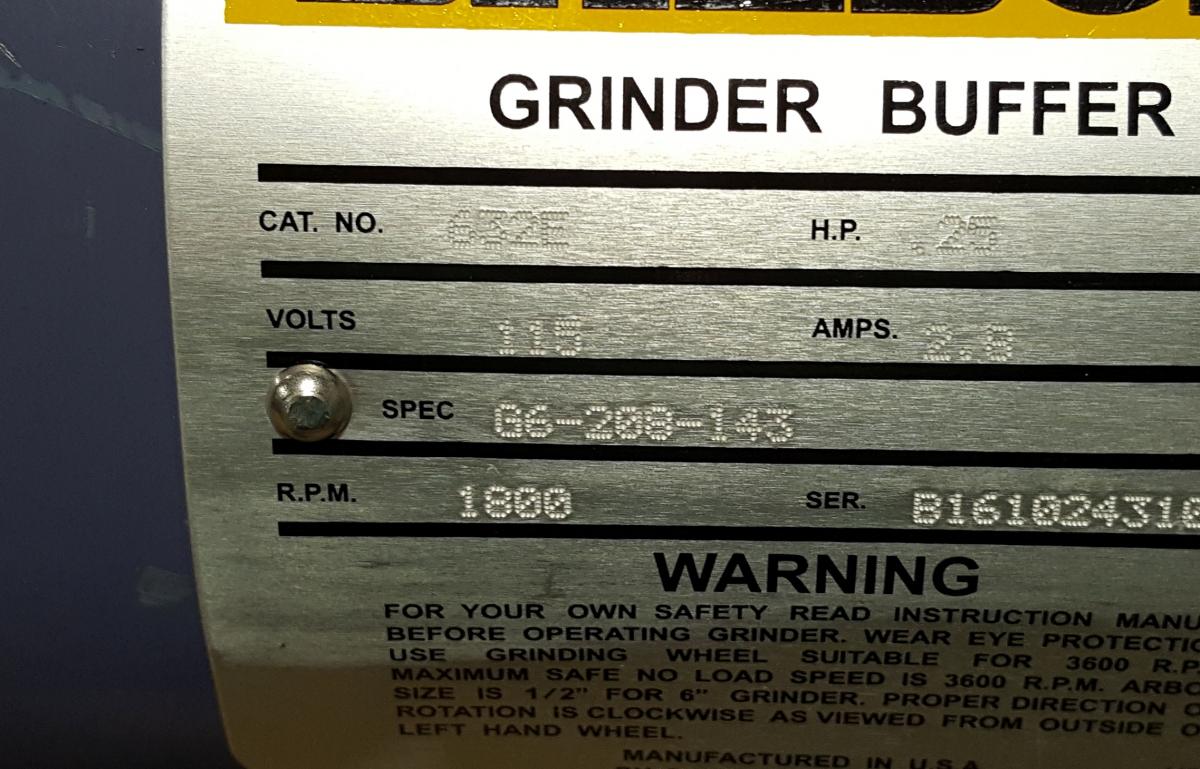 How fast How fast
The surface speed of a grinder is what dictates how fast we grind and at what speed. Many people recommend slow speed grinders - a 6" grinder running at 1800 RPM as a great way to avoid burning the steel (and it is). A 6" 3600 RPM runs twice as fast and grinds twice as fast, and by the end of this series you will be able to grind on it with no real risk of burning. We stock 8" 1800 RPM grinders which a surface speed between the 6" 1800 and 3600 machines. While faster (3600) grinders exist I don't recommend them, they grind very fast which can be an issue with heat, but also lots of the better 8" wheels aren't really designed for that speed.
Variable Speed
A couple of vendors offer variable speed grinders for sale. In general the top speed is slower than 3600 so what you end up with is a slow speed grinder that can go slower. In addition variable speed electronics are just not as reliable as a fixed speed. And why would you want to grind slower once you learn to grind faster. So I cannot recommend them.
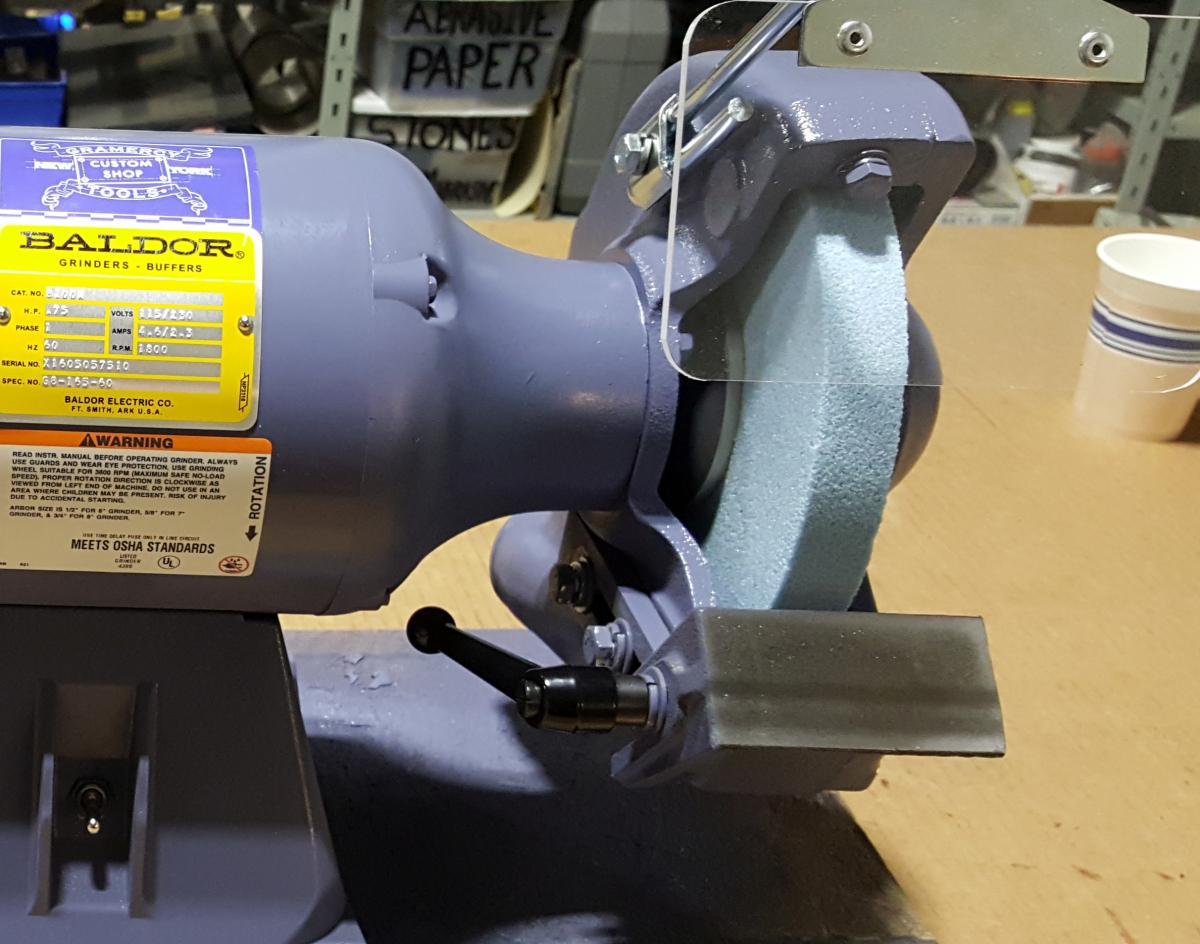 Guards Guards
With modern wheels there really isn't much of a risk of a wheel exploding. But an exposed wheel is always a hazard. A spinning wheel can grab a loose thread or hair, and rip off your arm or head. A trip and fall can have you grab out to a spinning wheel or have a tool ripped out of your hand with disastrous results. Baldor grinders, which we stock use heavy cast iron guards. That might be overkill but no matter what grinder you use make sure it has guards.
Eyeshields are also important to prevent flying debris. However even with shields always wear eye protection. Hopefully you will never need it. Over the years I have - more than once.
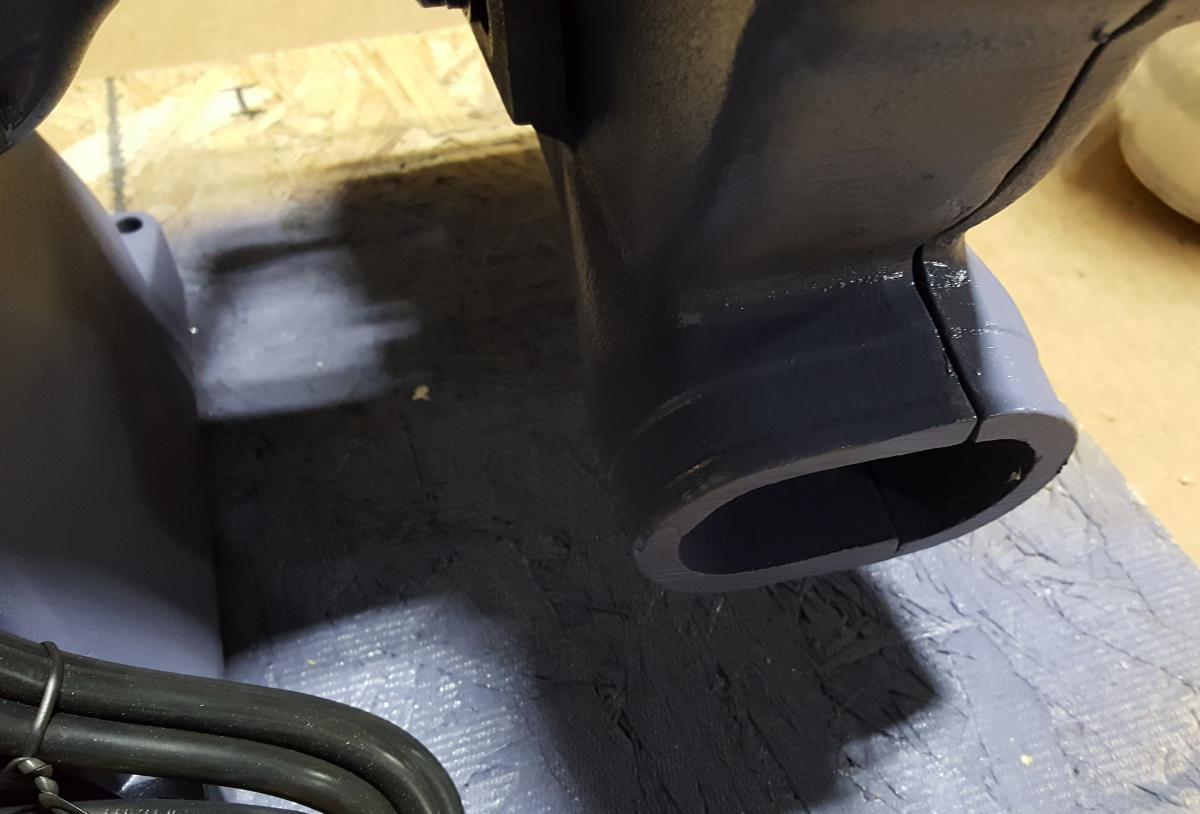 Dust collection Dust collection
Grinders spit burnt steel and abrasive dust behind them. Some grinders (like the Baldor) have proper dust ports built it. Unless you have a dust collection system only for metal DO NOT connect your grinder to the dust collector. Metal sparks from burning steel and wood dust on a container are EXPLOSIVE.
My grinder is just far enough away from a wall so that it doesn't make to much of a mess.
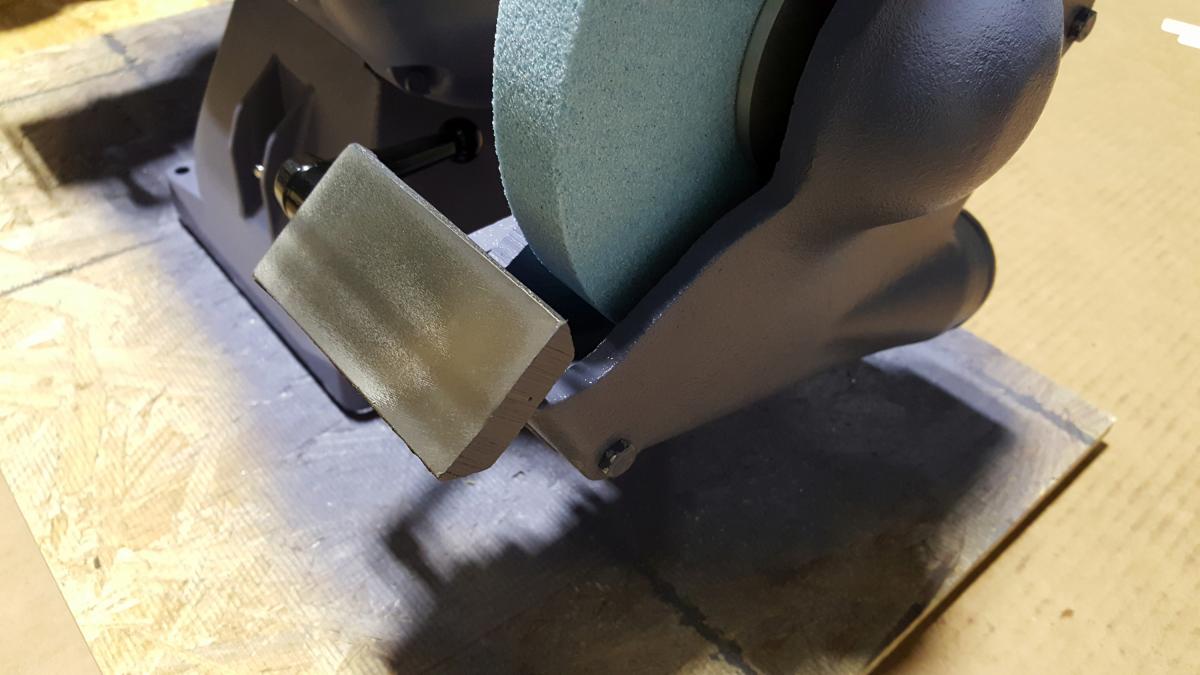 Rests Rests
We want a rock solid rest that won't move or flex during grinding. Some people clamp the tool in a jib and move the jig on a specially designed rest. If you plan to do the latter I suppose no rest is needed because you are going to replace it. Most rests that come with grinders are either cast iron or aluminum or bent sheet metal. Sheet metal sucks - it just bends under pressure. Cast aluminum is fine although it does get scratched from the abrasive dust. The grinders we stock have rock solid cast iron rests. These are by far my favorite. Solid, heavy, and no flex whatsoever. I think no matter what grinder you get if the rests aren't solid either buy an aftermarket rest or make something solid. It doesn't have to be complicated. I adjust my rest by getting it into the approximate correct position and tightening the clamps and then tapping it to final position. The method looks cludgy but works well.
Unlike a printed magazine which has page limits on a blog you can go on and on and on. Which it seems I have done here. On one side this is far more information that anyone actually needs, but I am trying to cover all the questions that I regularly get. As I have gone on at such length I think I will put "Grinding Wheel Chemistry and Nominclature" in part 3.
|
Join the conversation |
|
 Joel's Blog
Joel's Blog Built-It Blog
Built-It Blog Video Roundup
Video Roundup Classes & Events
Classes & Events Work Magazine
Work Magazine



 Belt, Flat Grinder, or Wheel
Belt, Flat Grinder, or Wheel How big a wheel
How big a wheel How fast
How fast Guards
Guards Dust collection
Dust collection  Rests
Rests
And dressing could be another topic. One popular method turns your nice friable coarse wheel into a much finer grit effectively.